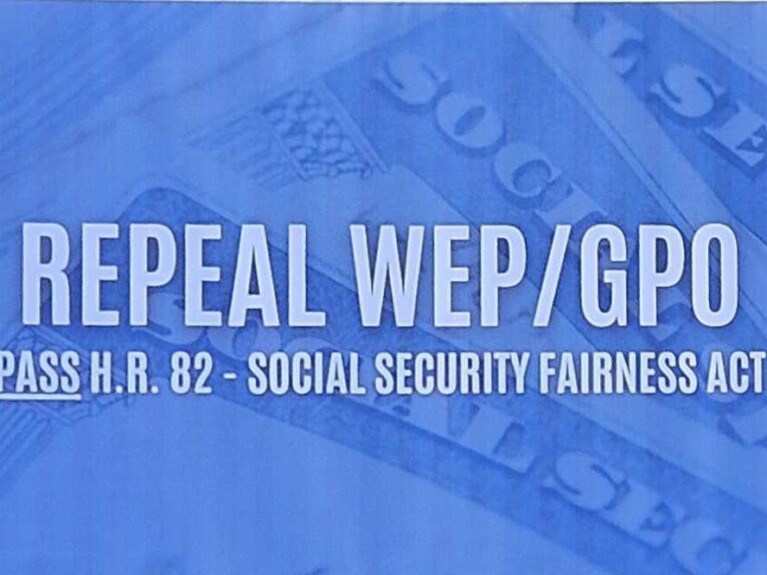FEHBP Premium Increase Burden for Federal Employees and Annuitants
FOR INFORMATION:
703-838-7760 ext. 201
National Active and Retired Federal Employees Association (NARFE) President Margaret L. Baptiste today expressed concern that federal annuitants and workers will be burdened by the premium increases announced in the federal employee/retiree health insurance program and will continue to see the burden of premiums. “The overall average Federal Employees Health Benefits Program (FEHBP) premium increase of 7.3 percent for 2011 will be difficult for federal annuitants to bear in a year when no retirement cost-of-living adjustment (COLA) is expected and when the federal employee pay raise is anticipated to be minimal or could be cut altogether,” Baptiste said.
Baptiste said NARFE is also troubled that the share paid by employees and retirees in the program’s most popular plan (Blue Cross/Blue Shield Standard option) will rise by 6.9 percent for self only and 7.6 percent for family plans coverage.
“A 7 percent increase in our program’s most popular plan is tough enough in a no-COLA year for retirees and when workers are expected to receive a nominal pay increase, if that,” said Baptiste.
FEHBP Premiums Could Have Been Lower
“We recognize that the 2011 rate hike was lower than the increases in other large group health insurance programs and that the Office of Personnel Management (OPM) is serious about initiatives to reduce prescription drug costs, which NARFE supports. However, FEHBP premiums could have been lowered if it were not for the Administration’s decision to decline a payment available to other public and private employers who provide drug coverage as generous as Medicare’s,” Baptiste said. “Once again, this year, the Administration left $1 billion on the table — a subsidy available to and accessed by private employers in the marketplace, which could be used to lower worker and annuitant premium costs,” she said.
The 2003 Medicare reform law provides such employers a payment as an incentive to retain their retiree drug coverage. A 2007 Government Accountability Office report found that premium growth in one of the largest FEHBP plans with many older enrollees could have been 3.5 to 4 percent lower in 2006 had the payment been accessed. And, it could have reduced overall FEHBP premiums for the year by more than 2 percent.
Medicare Part B Relief for Federal Annuitants
In addition, NARFE’s President said she was concerned how about 300,000 federal annuitants who are not eligible to receive Social Security will pay for the 2011 Medicare Part B premium increase and the FEHBP rate hike. While most Social Security recipients are “held harmless” from premium increases in years without a COLA, federal, state and local government retirees who do not receive Social Security pay the full Part B rate hike, plus an extra amount which subsidies the premium protection most Medicare beneficiaries have in no COLA years. The House had passed NARFE-backed legislation (H.R. 3631) in September 2009 which would have protected all retired public sector employees from the 2010 Medicare Part B premium increase, but the Senate did not take up the bill. “We are disappointed that Congress failed to offer premium protection equity to the entire public service family before the election recess and we urge them to stop the imposition of a second year of the unfair Medicare premium increases on federal, state and local government retirees when the House and Senate reconvene in November,” Baptiste said.
New Medicare “Sub-Option” Pilot Project
Baptiste said that her Association was interested in Medicare-related plans to be offered through FEHBP by the GEHA and Mail Handlers health plans in 2011. Earlier this year, OPM consulted with NARFE on the proposed project which will test the viability of a voluntary “sub-option” within the FEHBP that would pay all or part of a Medicare Part B premium (as appropriate) for Medicare-eligible federal annuitants.
“Given the potential savings to federal annuitants, and the voluntary nature of the pilot, we believe that the Medicare sub-option ought to be given a chance. We are pleased that the OPM has said that the sub-option will not automatically become a regular feature of FEHBP until OPM evaluates it and decides whether it merits continuation after the second year of the demonstration. NARFE will continue to review the development of the new option with OPM as the pilot project moves forward,” Baptiste added.
# # #
NARFE, one of America’s oldest and largest associations, was founded in 1921 with the mission of protecting the earned rights and benefits of America’s active and retired federal workers. The largest federal employee/ retiree organization, NARFE represents the retirement interests of nearly 5 million current and future federal annuitants, spouses, and survivors.


